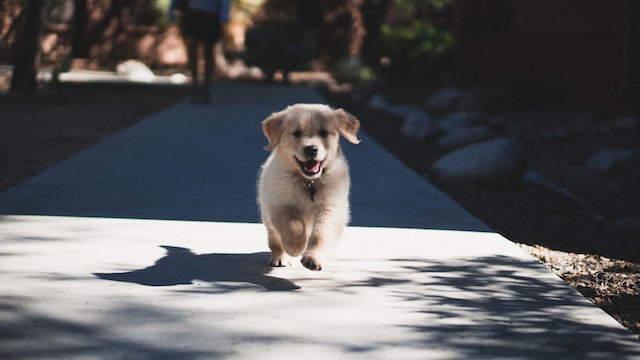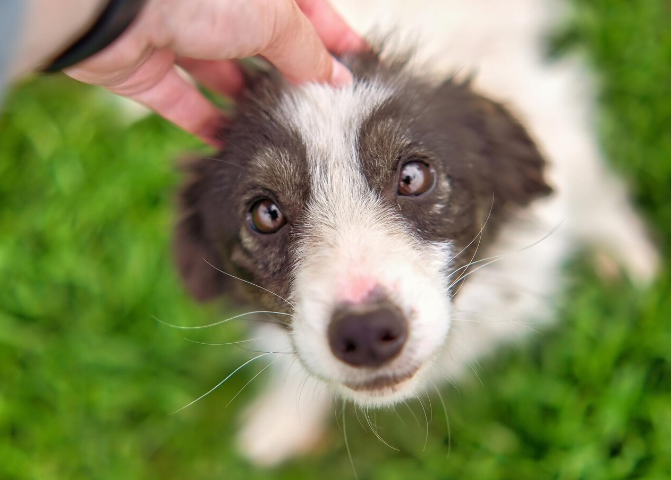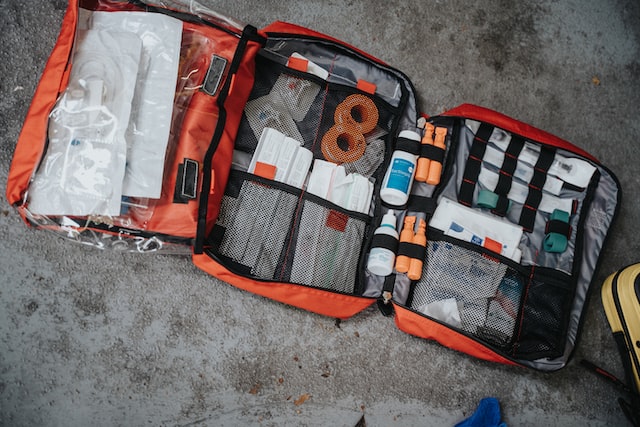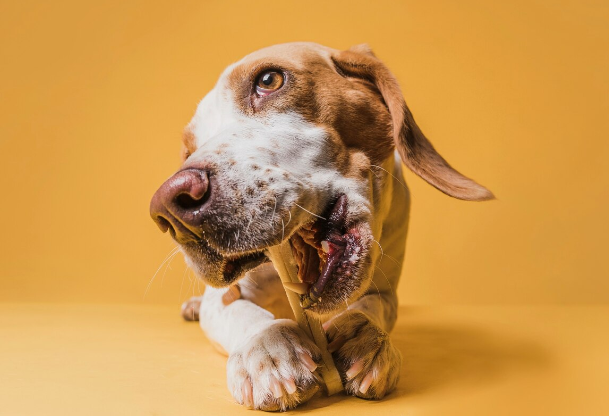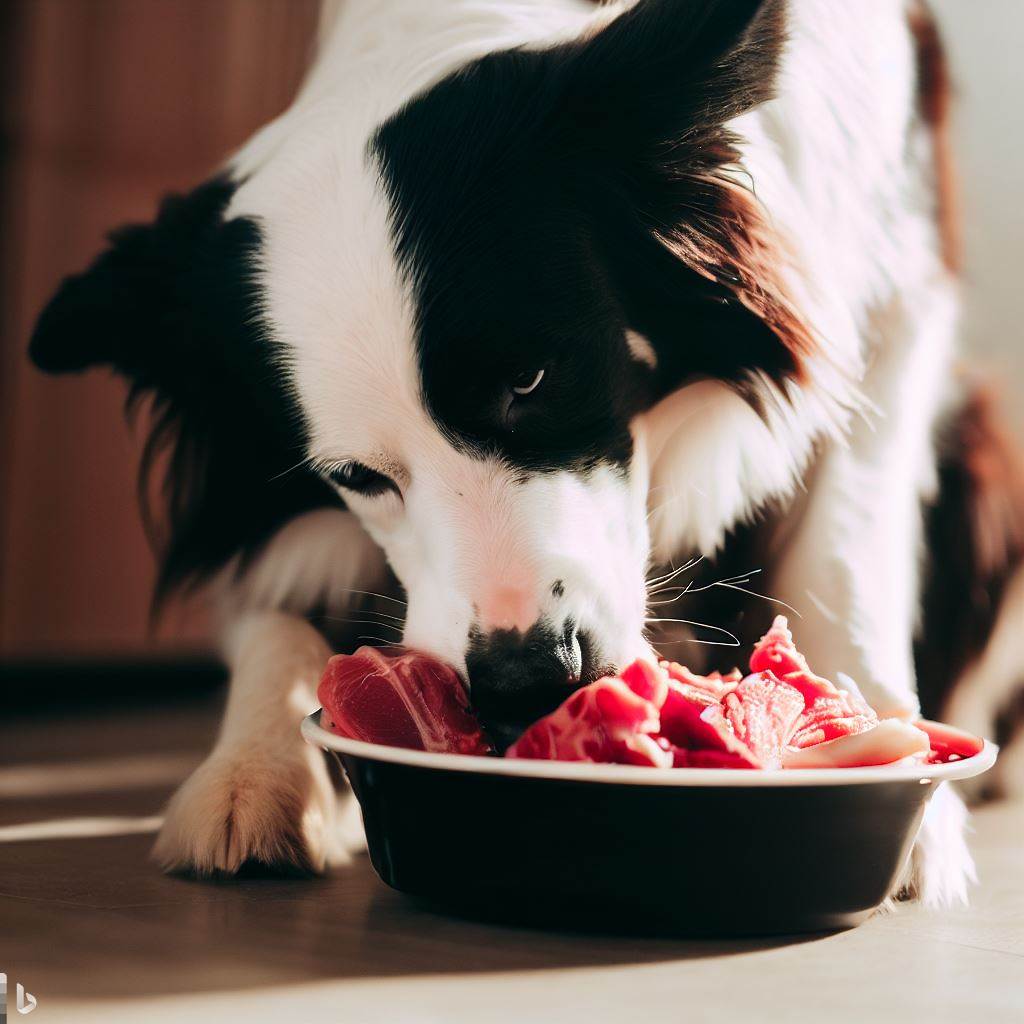- Key Takeaways
- Traveling With ESAs/Pets on Singapore Airlines- General Rules
- Pets as Checked Baggage
- Pets as Cargo
- Preparing for Travel With Pets
- Tips for Smooth Travel
- To minimize anxiety and help pets adjust to traveling, the airline advises its passengers to take the following steps:
- Pet Containers- Requirements
- Traveling With Pets- At the Airport
- Breed Restrictions
- Destination-Specific Regulations
- Fees
- Traveling with Assistance/Service Dogs on Singapore Airlines- General Guidelines
- During the Flight
- Arrival in Singapore
- Documentation Required for Traveling with Assistance Dogs
- Assistance/Service Dogs- Restricted Breeds
- Destination-based Restrictions For Traveling With Assistance Dogs
- Why Train Your Dog With Service Dog Training School International?
- What Do Our Service Dog Training Programs Include?
- FAQ
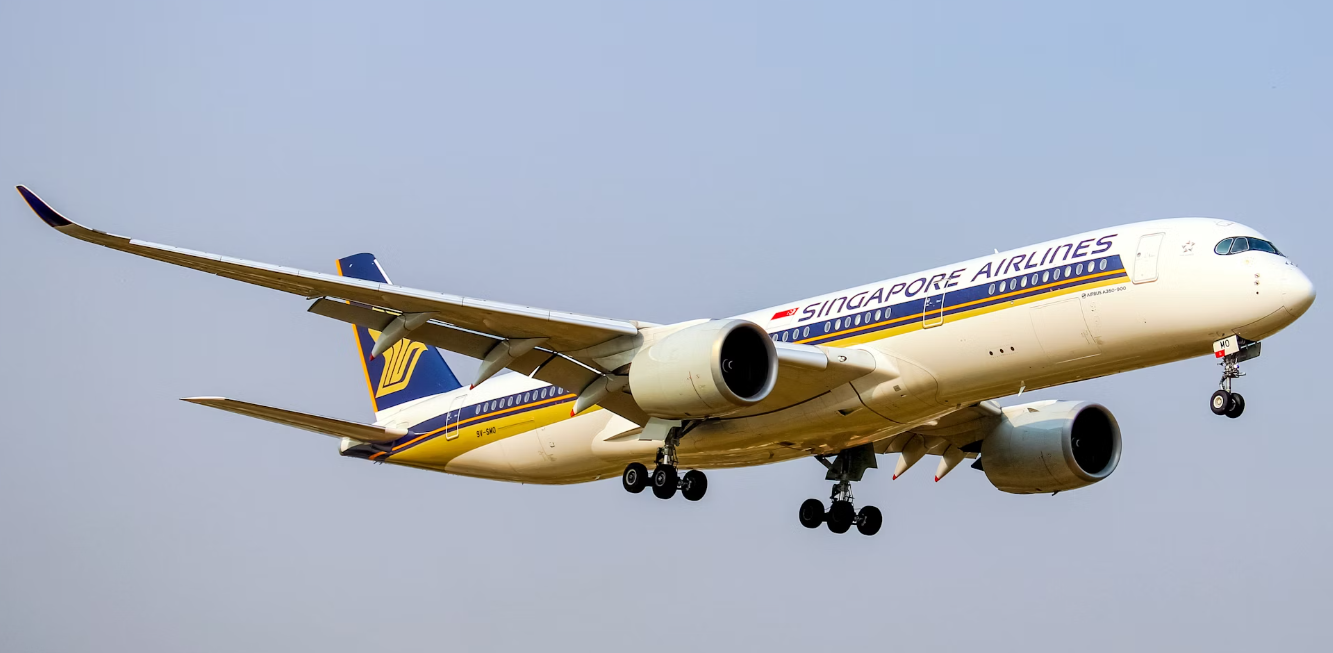
Imagine planning the trip of a lifetime, and your furry friend is coming along for the adventure! Whether they are your beloved pet or a service dog trained to support you every step of the way, the logistics of flying can feel stressful and daunting. Preparing ahead of time is essential to prevent any inconvenience from ruining your wonderful trip!
When talking about wonderful trips and adventurous journeys, we have to admit that Asia offers exotic destinations to all travel enthusiasts.
Singapore Airlines, which is one of Asia’s major carriers, has a reputation as a top-class airline that provides excellent hospitality for all its passengers, including those traveling with pets or service dogs.
In today’s article, we will guide you through everything you
need to know to make your journey on Singapore Airlines stress-free
and filled with positive experiences for both you and your paw
friend!
Key Takeaways
Does Singapore Airlines Accept Emotional Support Animal (ESAs)?
With effect from 1 April 2023, the airline no longer allows customers to travel with their emotional support dogs.
Based on the information provided on the airline’s website, passengers traveling with companion animals, such as ESAs and assistance dogs in training, may be required to provide relevant documentation or answer questions from the airline’s staff. These questions aim to determine whether the dog is eligible to travel as an assistance dog.
Does Singapore Airlines Accept Service/Assistance Dogs?
Singapore Airlines accepts assistance/service dogs in the passenger cabin as long as they comply with specific requirements, as well as the regulations of the departure, transit, and destination country.
Do Service/Assistance Dogs Travel For Free?
Yes, the airline accepts assistance/service dogs at no additional cost.
How to Get a Service/Assistance Dog?
Service/assistance dogs are considered medical equipment and not pets as they are trained to perform specific tasks for the benefit of a person with a disability. Individuals who already have a dog, may consider having them trained or train them with the help of our team at Service Dog Training School International.
How to Qualify for a Service Dog?
To qualify for a service/assistance dog, an individual must be diagnosed with a disability, whether physical or mental, that limits one or more major life activities.
How to Get Started?
You can get started by taking the SDTSI
online training assessment to see if you qualify, and enroll in the Service
Dog Training Course that would be most beneficial for you based on your needs.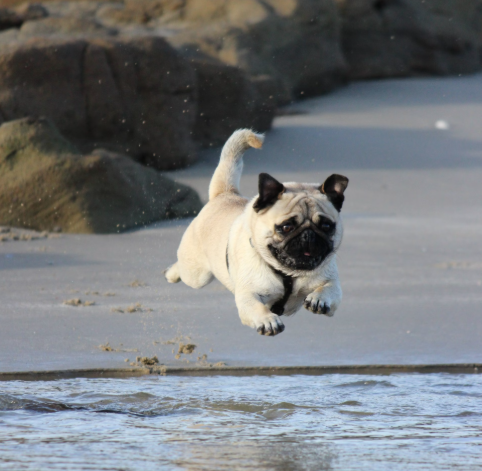
Traveling With ESAs/Pets on Singapore Airlines- General Rules
Singapore Airlines does not accept Emotional Support Animals. We advise passengers traveling with ESAs to review the airline’s pet policy.
Pets are allowed to travel either as checked baggage or in the cargo hold, depending on the flight and specific requirements. To ensure a hassle-free journey, the airline advises passengers to have all the necessary documents prepared in advance.
We strongly advise you to review the information below, so you can properly prepare for your flight:
-
The airline permits only cats and dogs, and passengers should verify that their pet’s breed is not on the prohibited list.
-
Pregnant pets are not accepted for travel.
-
Pets can not travel on Boeing 737-operated flights due to the lack of temperature control in the cargo hold. Passengers who are unsure about the aircraft type for their flight should refer to the Flight Schedule page.
-
Certain flights, including SQ21 (Newark to Singapore) and SQ23 (New York to Singapore), do not allow pets. However, pets can travel on SQ25 from New York to Singapore.

Pets as Checked Baggage
Pets at the age of three months or older are allowed to travel on the same flight as their owners if they meet the airline’s requirements. Domesticated cats and dogs are generally eligible, though additional restrictions may apply depending on the departure, destination, or transit country.
If the combined weight of the pet and their travel container exceeds 32 kg, regulations require the pet to be transported as cargo.
Pets as Cargo
For pets traveling as cargo, arrangements can be made through your local Singapore Airlines Cargo office.
It is recommended that passengers contact the cargo office prior to departure to ensure all the necessary preparations are made in a timely manner.
Preparing for Travel With Pets
Proper preparation is essential to ensure a stress-free journey for both passengers and their pets.
Travelers are encouraged to review the airline’s self-checklist for traveling with pets as checked baggage before arriving at the airport.
“This is a checklist used by our airport staff to check if your pet and its pet container comply with the necessary requirements. It is not compulsory for you to complete this checklist but we do encourage you to go through it to ensure that all the requirements have been met before proceeding to the airport”.
Pre-Travel Requirements
Passengers should contact Singapore Airlines at least two weeks prior to departure to provide specific information about their pet, including:
- Species, breed, and type;
- Gender;
- Name and age;
- Color;
- Weight of the pet;
- Weight and dimensions of the travel container (length, width, and height).
It is important to be aware of the animal transport regulations specific to each country involved in the trip, including the departure, transit, and destination locations.
For pets departing from Singapore, the following documents are required:
- An export license;
- Indemnity form;
- Veterinary health certificate;
- Proof of rabies vaccination;
- Transshipment license (if applicable);
- Pet passport (if applicable).
For pets entering or transiting through Singapore, the required documents include:
- A valid import or transshipment license (valid for 30 days);
- Indemnity form;
- Veterinary health certificate;
- Vaccination records, including the pet’s microchip number.
All documentation must be presented at check-in on the day of departure.

Tips for Smooth Travel
To minimize anxiety and help pets adjust to traveling, the airline advises its passengers to take the following steps:
- Help their pets get accustomed to travel in a container several weeks before the flight. The time spent in the counter should be increased gradually and the pet should be rewarded with treats for remaining calm in the travel container.
- Place a familiar blanket or item inside the container, along with absorbent material on the floor.
- On the day of travel, passengers should feed their pets a light meal and provide a small amount of water about two hours before placing them in the counter.
- Exercise their pets before heading to the airport.
- Ensure all leashes are removed before securing their pet inside the container.
- Sedatives or tranquilizers should not be given to pets prior to the flight.
Pet Containers- Requirements
Pet containers must meet the standards set by the International Air Transport Association (IATA). The maximum allowable height for pet containers varies by aircraft type as follows:
- 70 cm for A350 aircraft;
- 60 cm for A380 aircraft;
- 101 cm for B777 aircraft;
- 111 cm for B787 aircraft.
The container must meet the following criteria to provide a safe and comfortable experience for pets onboard:
Appropriate
Size
The container should allow the pet to move comfortably, and enable them to:
- Turn around naturally while standing;
- Stand and sit upright;
- Lie down in a natural position.
Proper Ventilation
Ventilation is required on at least three sides of the container, with most ventilation located on the upper section.
Food
and Water Accessibility
The container should have built-in food and water dishes, either securely fixed inside or accessible for refilling from the outside.
Secure
Construction
The container must be securely fastened to prevent accidental escape.
Additional Factors to Consider
Passengers traveling with more than one pet should keep in mind that each pet is required to travel in their own container.
Puppies or kittens from the same litter are allowed to share a container if:
- They are between 3 to 6 months old;
- Each weighs less than 14 kg;
- A maximum of two puppies or kittens can travel in the same container.
For further details, passengers are advised to refer to the IATA guidelines.

Traveling With Pets- At the Airport
Check-In
Passengers are advised to arrive at the airport at least two hours before their flight. For flights departing from the US, it is recommended that passengers check in at least three hours in advance due to additional security screening requirements.
Pets should be checked in at the same counter as their owners.
The airline advises all passengers with pets to ensure all necessary documentation, including the signed indemnity form, is ready to present at the time of check-in.
Before Boarding
Once check-in is complete, passengers can proceed to the boarding gate. Pets will be held in a designated baggage storage area and transferred to the aircraft shortly before departure to reduce exposure to weather and temperature changes.
During the Flight
Pets traveling as checked baggage are placed in the bulk cargo area, which is temperature-controlled. However, passengers should note that temperature conditions may differ between the cargo hold and passenger cabin. Throughout the flight, pets will have access to fixed food and water bowls within their containers, but these can only be refilled when the aircraft is on the ground.
On Arrival
Quarantine procedures and pet collection points vary by airport. It is advisable to consult with staff at the destination airport to understand the specific requirements and location for retrieving your pet.

Breed Restrictions
Certain dog and cat breeds, including crossbreeds and brachycephalic (short-nosed) types, are not permitted for transport on Singapore Airlines flights, whether as cargo or checked baggage.
The prohibited dog breeds include:
- Akita
- Boerboel
- Boston Terrier
- Boxer
- Brussels Griffon (Petit Brabancon)
- Bull Dogs (American, French, and English)
- Chow Chow
- Dogo Argentino
- Fila Brasileiro
- Japanese Chin (Chin, Japanese Spaniels, Japanese Pug)
- Lhasa Apso
- Mastiffs (including Neapolitan and Dogue de Bordeaux)
- Perro De Presa Canario
- Pit Bull (American Pit Bull Terrier, American Staffordshire Terrier, American Bull Dog, Staffordshire Bull Terrier)
- Pugs (including Carlino, Chinese, Mopshond, Mops Hund, Pekingese)
- Shar-Pei
- Shih Tzu
- Brachycephalic Spaniels (including Cavalier King Charles Spaniel, English Toy Spaniel, Tibetan Spaniel)
- Tosa
The prohibited cat breeds include:
- British Shorthair
- Burmese
- Exotic Shorthair
- Himalayan
- Persian
- Scottish Fold
Destination-Specific Regulations
Due to certain country restrictions, Singapore Airlines does not accept pets as checked baggage to or from the destinations listed below:
- Australia
- Brunei
- Denpasar, Bali
- Houston
- London Gatwick Airport
- Manchester
- New Zealand
- South Africa
- Dubai
- Hong Kong SAR
- London Heathrow Airport
However, pets may be transported as cargo. Passengers are advised to review the destination specific regulations and documents required for pet travel, on the IATA webiste, the Traveler's Pet Corner, and contact the airline’s local cargo office for assistance.
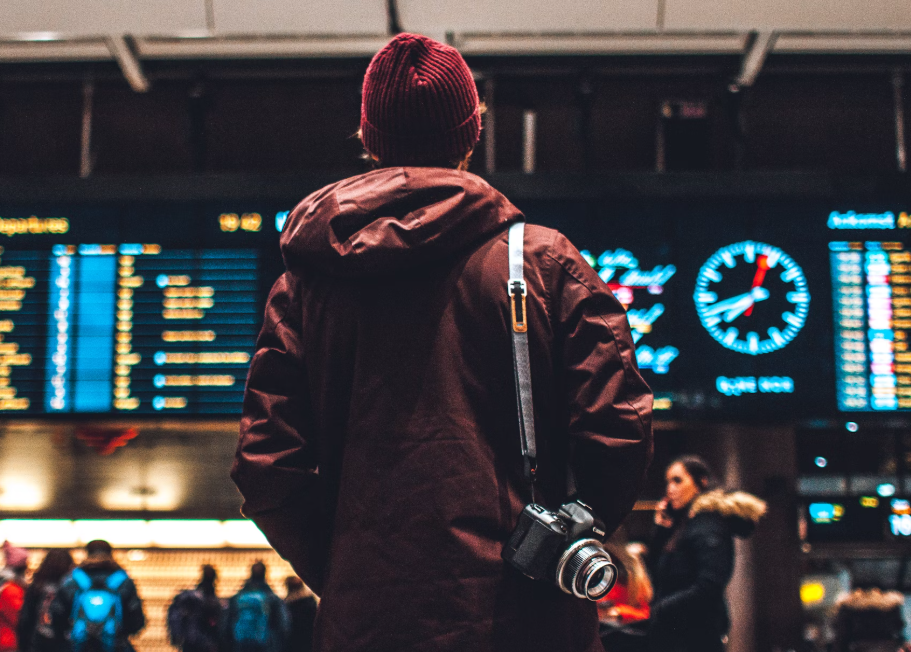
Fees
When traveling with a pet, both the pet and their container are not included in the free checked baggage allowance. They are classified as additional baggage, and as such, are subject to extra charges. The airline points out that prepaid or discounted rates do not apply to pet transportation.
We advise passengers to review the airline’s policy regarding pet fees on their website, the Additional Baggage section.
It’s also important to note that similar to other airlines, Singapore Airlines, also differentiates between its policy for traveling with pets to/from the US and to/from other countries.
Pet Fees for Travel to/from the US
Following the piece concept, a pet and their container will be treated by the airline staff as two separate pieces of additional baggage, each incurring its own charge.
Pet Fees for Travel to and from Countries (Except the US)
Fees will be based on the total weight of the pet and their container, and will be billed separately.
Pets who are transiting or being transferred to the airline, may be subject to additional fees.

Traveling with Assistance/Service Dogs on Singapore Airlines- General Guidelines
Singapore Airlines allows assistance dogs onboard their aircraft. Assistance dogs are trained to perform specific tasks related to a person’s disability (medical condition).
They travel at no cost in the passenger cabin, as long as they meet certain criteria and comply with the regulations of the departure, transit, and destination country.
Additionally, to be accommodated in the passenger cabin, an assistance dog must be at least 4 months old, behave appropriately, obey to commands and not pose a direct threat to the health ans safety of others.
For safety reasons, seats in the emergency exit row are not available for passengers with assistance dogs.
Service/assistance dog handlers should contact the airline and prepare the necessary documentation no later than 48 hours prior to departure.
As mentioned earlier in today's article, emotional support animals are no longer permitted starting April 1st, 2023. ESAs, along with other types of companion animals, are not classified as assistance dogs. Airline staff may ask questions or request relevant documentation to determine if the dog qualifies for accommodation as an assistance animal.
During the Flight
Assistance dogs should remain on the cabin floor in front of the passenger seat, with absorbent material placed underneath them. Smaller dogs are allowed to sit on their owner’s lap.
Furthermore, assistance dogs must be well-behaved, and leashed, harnessed or kept in a carrier at all times. Disruptive behavior such as excessive barking, biting attempts, or lunging may lead to the dog being denied assistance dog status.
Assistance dogs must not occupy a seat or obstruct access to aisles, emergency exits or legroom.
A muzzle is not required unless the dog is of a restricted breed. However, service dog handlers are advised to have one on hand.
Arrival in Singapore
Service/assistance dog handlers are not required to check in a transport container if their assistance dogs are recognized by the Singapore’s Animal & Veterinary Service (AVS).
Upon arrival, dogs undergo a veterinary inspection. If all conditions are met and the dog is healthy, they will be allowed to enter Singapore.
It’s recommended that service dog handlers visit the AVS website for more information on import procedures and requirements.

Documentation Required for Traveling with Assistance Dogs
Singapore Airlines requires specific documentation for assistance dogs based on whether they travel to/from India, to/from the US or to from other countries.
We will list below the required documentation based on the country of arrival/departure.
Documentation for Traveling with Assistance Dogs to/from India
- No Objection Certificate (NOC) from the Animal Quarantine and Certification Services (AQCS);
- Import license from the Directorate General of Foreign Trade (DGFT);
- Veterinary health certificate;
- Transshipment license, for dogs transiting through Singapore;
- Rabies vaccination letter. A rabies certificate is not required if the country/region of export falls under Category A in Singapore’s Animal & Veterinary Services rabies risk classification;
- Proof of completion of assistance dog training;
- Documentation regarding the dog's behavior (if the assistance dog is of a restricted breed);
- Documentation confirming the assistance dog will not need to relieve themselves during the flight or can do so in a manner that does not pose health or sanitation concerns, for flights longer than 8 hours.
Documentation for Traveling with Assistance Dogs to/from the US
- US DOT Service Animal Air Transportation Form;
- US DOT Service Animal Relief Attestation Form;
- US Dog Import Declaration Form, for dogs traveling to or transiting through the US;
- Import and/or export permits (based on the country-specific regulations);
- Transshipment license, for dogs transiting through Singapore;
- Veterinary health certificate;
- Rabies vaccination letter. A rabies certificate is not required if the country/region of export is listed under Category A of Singapore's Animal & Veterinary Services rabies risk classification.
Documentation for Traveling with Assistance Dogs to/from All Countries (Except India and the US)
- Import and/or export permits (depending on the specific regulations of the destination country);
- Transshipment license, for dogs transiting through Singapore;
- Veterinary health certificate;
- Rabies vaccination certificate. A rabies certificate is not needed if your country or region of export is listed in Category A of Singapore's Animal & Veterinary Services' rabies risk categorization;
- Proof of assistance dog training completion;
- Documentation attesting to the dog’s behavior (if your assistance dog is of a restricted breed);
- Certification stating that the assistance dog will not need to relieve themselves during the flight, or that they can do so in a manner that does not pose health or sanitation concerns (required for flights longer than 8 hours).
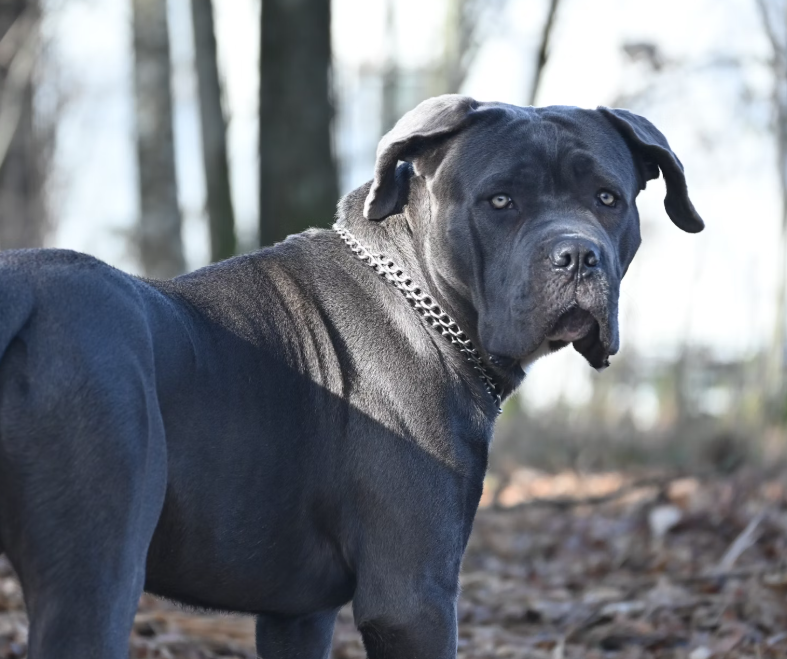
Assistance/Service Dogs- Restricted Breeds
Handlers of assistance dogs that belong to a restricted breed (including crossbreeds) may be required to provide additional documentation regarding their dog’s behavior before they can be accepted in the cabin. A suitable muzzle must be available, and the assistance dog must remain harnessed and leashed throughout the flight.
The restricted breeds include:
- Akita
- Boerboel
- Bull Terrier
- Doberman Pinscher
- Dogo Argentino
- Fila Brasileiro
- Mastiffs, including Bull Mastiff, Cane Corso, Neapolitan Mastiff, and Dogue De Bordeaux
- Perro De Presa Canario
- Pit Bull, including American Pit Bull Terrier, American Staffordshire Terrier, American Bulldog, and Staffordshire Bull Terrier
- Rottweiler
- Shepherd Dogs, including Belgian Shepherd Dog, East European Shepherd Dog, and German Shepherd Dog
- Tosa
For further details, service/assistance dog handlers can contact their local Singapore Airlines office.
Destination-based Restrictions For Traveling With Assistance Dogs
Due to specific import and export regulations at certain destinations, assistance dogs may not be accepted to travel in the cabin into or out of the following locations:
- All destinations in New Zealand
- Brunei (BWN)
- Bali (DPS)
- Dubai (DXB)
- Maldives (MLE)
For destinations, different from those listed above, service/assistance dog handlers should review the import regulations and ensure compliance.
For detailed information on destination-specific regulations and the necessary documents for traveling with animals, handlers should visit to IATA Travel website or contact the embassy/consulate at their destination.

Why Train Your Dog With Service Dog Training School International?
We offer a flexible and accessible approach to training, with courses that are easy to follow and broken down into manageable steps. The programs are designed to accommodate individual needs, allowing handlers to work at their own pace.
The tutor team remains available throughout the training journey and even after completion, providing helpful feedback, guidance, and assistance with any questions or concerns that may arise.
Upon completing our program, handlers receive a training certificate, confirming that their dog has undergone proper training.
For verification purposes, details about all dogs that have completed the program are accessible on the website.
As service dog regulations vary regionally, it’s advisable to review local laws ahead of time.
What Do Our Service Dog Training Programs Include?
Training a service dog involves much more than teaching specific tasks. While performing particular tasks to assist individuals with disabilities distinguishes service dogs from pets and companion animals, the process also includes two vital elements: obedience and public behavior training.
Basic and Advanced Obedience
The first step is ensuring your dog is proficient in basic obedience commands, including "sit," "wait," "heel," walking calmly on a leash, and staying focused. Mastering these fundamentals is essential before advancing to more specific tasks that are customized to the handler's needs.
Only when your dog has a firm grasp of these basic commands, task-specific training should begin.
Specialized Service Dog Task Training
The tasks a service dog performs are highly individual and based on the person’s needs. These may include:
- Tactile stimulation, such as pawing, nudging, or providing Deep Pressure Therapy (DPT);
- Reminding the owner to take medication, interrupting repetitive behaviors;
- Alerting to medical conditions (e.g., changes in heart rate, blood sugar, or seizures);
- Assisting with mobility, retrieving items, or guiding the handler to an exit;
- Alerting to environmental sounds, opening or closing doors, and more.
Some of these tasks may be easier for your dog to learn, especially if a strong emotional bond exists between you and your dog.
Public Behavior Training
A key aspect of service dog training is ensuring the dog behaves appropriately in public spaces and remains focused on their handler, regardless of the situation and distractions.
For effective training, it’s important to gradually expose your dog to new environments and distractions, starting with simple scenarios and progressively increasing difficulty.
Positive reinforcement is the core of successful training. By rewarding desirable behaviors, you’ll reinforce their repetition. The more frequently a behavior is rewarded, the more likely it is to occur again.
Our approach is rooted in positive reinforcement and humane methods, as we consider dogs part of the family and believe they deserve respect.
Early socialization is essential for building a well-behaved and confident service dog, and shouldn’t be overlooked, especially during the early stage of the dog’s development.
FAQ
May assistance/service dogs of restricted breeds travel on Singapore Airlines?
Yes, they may but under certain conditions:
- Airline staff may require additional documents regarding the dog’s behavior to accept them in the cabin;
- Handlers must have a suitable muzzle available;
- The dog must also be harnessed and leashed during the flight.
Are assistance/service dogs allowed to travel to on Singapore Airlines on all routes?
No, there are destination-specific restrictions, and the airline may not accept assistance dogs traveling to certain locations. The restricted destinations are as follows:
- Into all destinations in New Zealand;
- Into/Out of Brunei (BWN);
- Into/Out of Bali (DPS);
- Into/Out of Dubai (DXB);
- Into/Out of Maldives (MLE);
Does Singapore Airlines accept emotional support animals?
ESAs and other types of companion animals are not accepted. However, airline agents may require relevant documentation and ask specific questions to determine whether the dog may be accommodated as an assistance dog





